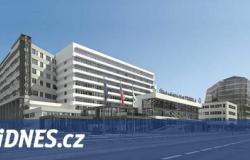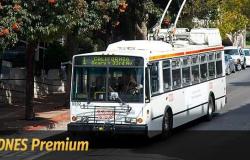“Altogether, we have 129 schools in which Roma students make up more than a third of the children. Somewhere it may be that it is the only school in the area where the Roma community has a strong presence. This is probably not intentional segregation, but then there are such schools in big cities, such as Brno or Prague.
At the same time, Roma students make up two percent of the population in the capital, so there is no reason for forty percent of them to go to one school,” Jan Mušuta, head of the Department of Equal Access to Education of the Ministry of Education, told Novinkám a Práva.
In most cases, schools with a high proportion of Roma students are the only ones in the area. But then there are municipalities that establish several schools, and one of them is a Roma school. “It’s clear there that it can be segregation. There are thirty to forty of them, so we can cover them,” added Mušuta.
The topic of Roma needs to be reflected in school education programs, Bek believes
Science and schools
The Czech Republic has been unable to defend the rights of Roma in education for sixteen years since the judgment of the European Court of Human Rights in the DH case, which involved the discrimination of Roma children. They must therefore submit a plan of measures to the European Council of Ministers every year. This year it has clearer contours.
First of all, the state will focus on municipalities that create artificial catchment areas with the aim of having children from Roma or poor neighborhoods go to one of the schools. “There is a street from one part of the city, then a street from the other periphery, and finally the municipal office, where people without a permanent residence are reported,” described Mušuta.
Money and field support
The Ministry will invite the founders to redraw the districts according to natural schemes. If they do not comply, the Ministry of the Interior will review the decree on districts and, if necessary, stop its effectiveness. If the municipality does not agree, the matter will go before the Constitutional Court. “It is inadmissible from the point of view of the anti-discrimination and education law,” said Mušuta. In the worst case, the ministry can cancel the school.
However, in many schools, the distribution of Roma is done without formalities. The director of the catchment school simply tells the Roma mother at the time of enrollment that her child will be better off in a school where more Roma children attend. At the same time, the Roma themselves often want to spare their children from bullying.
Experts: Roma pupils form the majority in 77 schools, segregation brings losses
Science and schools
The families of the majority population, on the other hand, try to place the child in a school where there are not many Roma students, so they sometimes decide to “enrollment tourism” and temporarily report the child’s residence in a neighboring district.
The ministry is preparing to change the law, according to which schools with a certain number of socially disadvantaged or otherwise backward children would receive more money, so that they would be able to use the care of psychologists or social pedagogues. This could motivate schools to accept Roma pupils.
Subsidy programs are also being prepared to engage outreach workers in Roma communities to explain the importance of education, rights and support people to claim them.
Education also has to deal with the fact that Roma children end up in special schools or classes much more often. Mostly with a diagnosis of mild mental retardation, where the details often play a role.
Results in many years
Fifteen percent of Roma are educated in special classes or have a modified educational plan with lower requirements. Overall, however, the proportion of children with disabilities is two percent of the population. Counseling workplaces that determine diagnoses, however, do not have a uniform and binding system of diagnoses. Everyone makes different decisions. Counseling centers should therefore receive a unifying diagnostic methodology, and the ministry intends to enforce its fulfillment.
According to the expert on education issues of the Association of Local Governments and the mayor of Kamýk nad Vltavou Petr Halada (STAN), all the measures look promising.
“The support of schools with a higher number of disadvantaged children will be really interesting, because they will have more counselors so that education and training take place there as they should. This should help desegregation,” he told Právu.
In the same way, he considers the support of field work and the unification of the approaches of counseling workplaces to be beneficial, which could be reflected in the number of Roma in special schools.
However, it is difficult to estimate how the mentioned thirty to forty municipalities will react to the change of catchment areas. According to Halada, a number of municipalities also seek support from the Constitutional Court in other matters. And even according to Musuta, the measures will probably not go completely smoothly. “The parents of the majority society, the voters, do not want the schools to be mixed. But desegregation is positive for the municipality, because it wants to have employed residents who are not anti-social, normally involved in society, and you don’t want to reproduce poverty,” added Mušuta. But the results will be visible for many years.
Don’t be crazy! Young Roma rap against being placed in practical schools
Homemade

Tags: state steps dozens segregated schools
-







